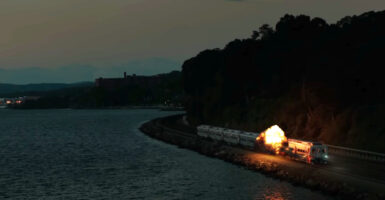Developer Redesigns Childhood Toys As Landmine Detectors
This article is more than 2 years old
If you had to make a potentially life-saving invention out of the things you played with as a kid, what would it be? A Nerf Defibrillator? A pop-cap gun insulin injector? Massoud Hassani’s idea was taken from games he played with his brother and friends, where they would race small, wind-blown objects across the desert fields surrounding their home in Qasaba, Kabul. The danger inherent in these games was the sizable probability that landmines could be buried beneath the fields. Sounds of “That next step’s a doozy” fill the streets.

Fast-forward nearly 20 years, and Hassani is keeping the spirit of his childhood toy alive for his 2011 graduation project at the Design Academy Eindhover, an industrial design school in the Netherlands. Expanding the original concept, Hassani created the Mine Kafon, a large, dandelion-puff-looking device consisting of a central iron ball with many long bamboo rods sticking out of it. At the ends of these rods are discs of biodegradable plastic. The length of the bamboo is optimized to allow for a maximum number of plastic “feet” to be applied, thus covering as much surface area as possible.
It crosses the desert, pushed by wind, and is heavy enough to detonate any mine it happens to roll across. The damage is relegated to just the mine, and a few of the contraption’s legs, so theoretically it isn’t a one-use device. There are plans to eventually include a GPS-tracking chip in the center of the device, which could be used to map out safe walking paths through the vast expanses of unsafe ground. At at an estimated cost of $50 a ball, there are worse ways of saving a life.
Director Callum Cooper of ardentfilm.org made a short film of Hassani’s work, aiming to draw attention to the world’s oft underestimated landmine problem. Hassani will be showing his work at expositions in N.Y.C.’s Museum of Modern Art, as well as the Gallery Slott in Paris. He’s now in the process of finding partners for funding and development of this cheap and largely effective tool.












